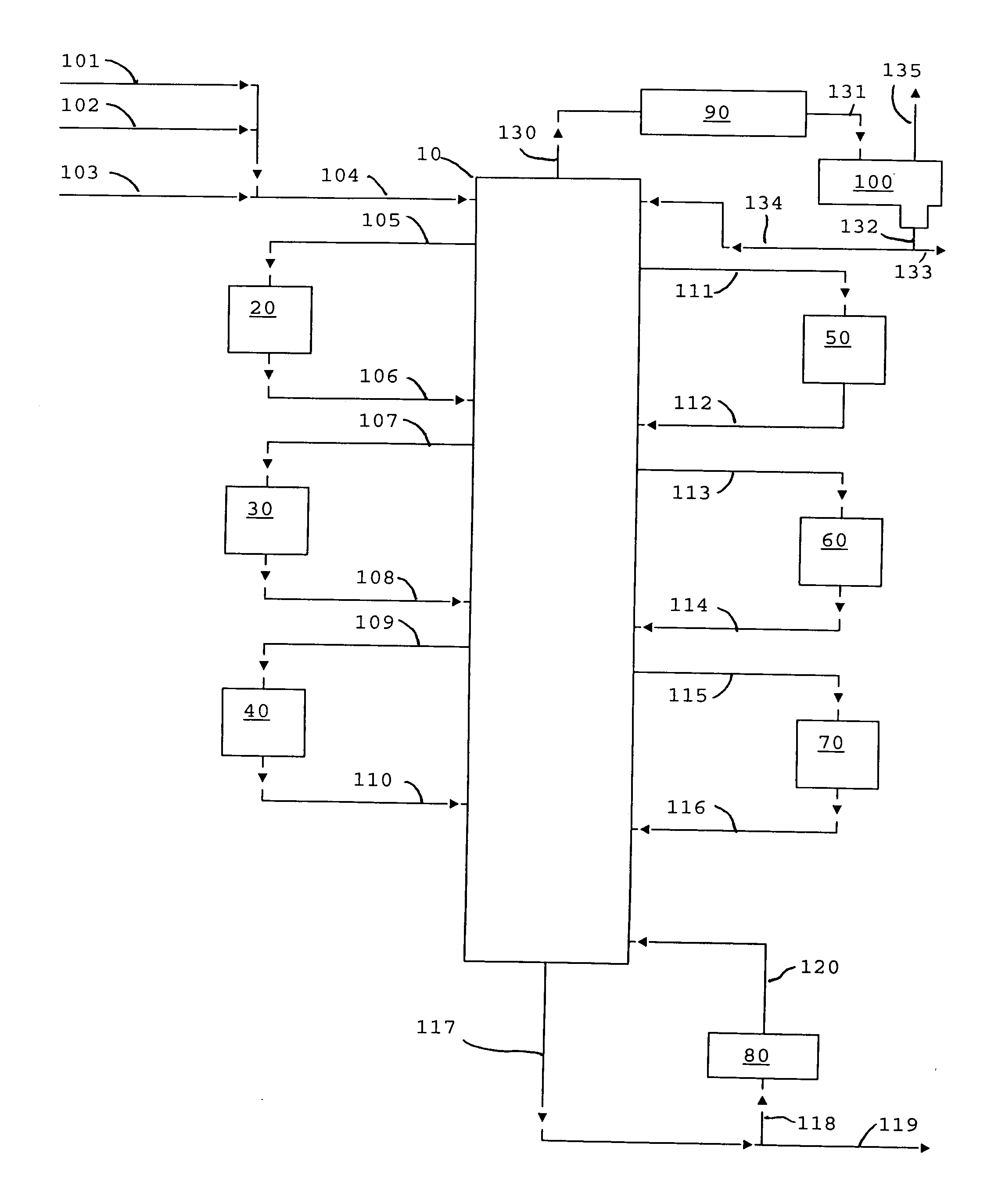Process for making diaryl carbonate
a diaryl carbonate and process technology, applied in the field of diaryl carbonate production, can solve the problems of increasing the cost of the process, breaking the azeotropic mixture, and consuming energy and money
- Summary
- Abstract
- Description
- Claims
- Application Information
AI Technical Summary
Problems solved by technology
Method used
Image
Examples
Embodiment Construction
[0013] Diphenyl carbonate is produced in a two step reaction wherein phenol first reacts with diethyl carbonate in the presence of a transesterification catalyst to produce ethyl phenyl carbonate and ethanol (1). This is followed by a second step disproportionation reaction wherein ethyl phenyl carbonate is converted to diphenyl carbonate and diethyl carbonate(2). The net reaction products are diphenyl carbonate and ethanol.
Typically the equilibrium constant for the first reaction is substantially less than one while that for the second reaction is somewhat greater than one. The first step can be carried out with equimolar amounts of phenol and diethyl carbonate or with and excess of either. In all cases the conversion of ethyl phenyl carbonate and diphenyl carbonate are impractically low, from the perspective of product recovery, at equilibrium.
[0014] Examples of organic carbonates produced by this invention are DPC (diphenyl carbonate), EPC (ethyl phenyl carbonate), MPC (methy...
PUM
| Property | Measurement | Unit |
|---|---|---|
| Volume | aaaaa | aaaaa |
| Time | aaaaa | aaaaa |
| Time | aaaaa | aaaaa |
Abstract
Description
Claims
Application Information
 Login to View More
Login to View More - R&D
- Intellectual Property
- Life Sciences
- Materials
- Tech Scout
- Unparalleled Data Quality
- Higher Quality Content
- 60% Fewer Hallucinations
Browse by: Latest US Patents, China's latest patents, Technical Efficacy Thesaurus, Application Domain, Technology Topic, Popular Technical Reports.
© 2025 PatSnap. All rights reserved.Legal|Privacy policy|Modern Slavery Act Transparency Statement|Sitemap|About US| Contact US: help@patsnap.com



